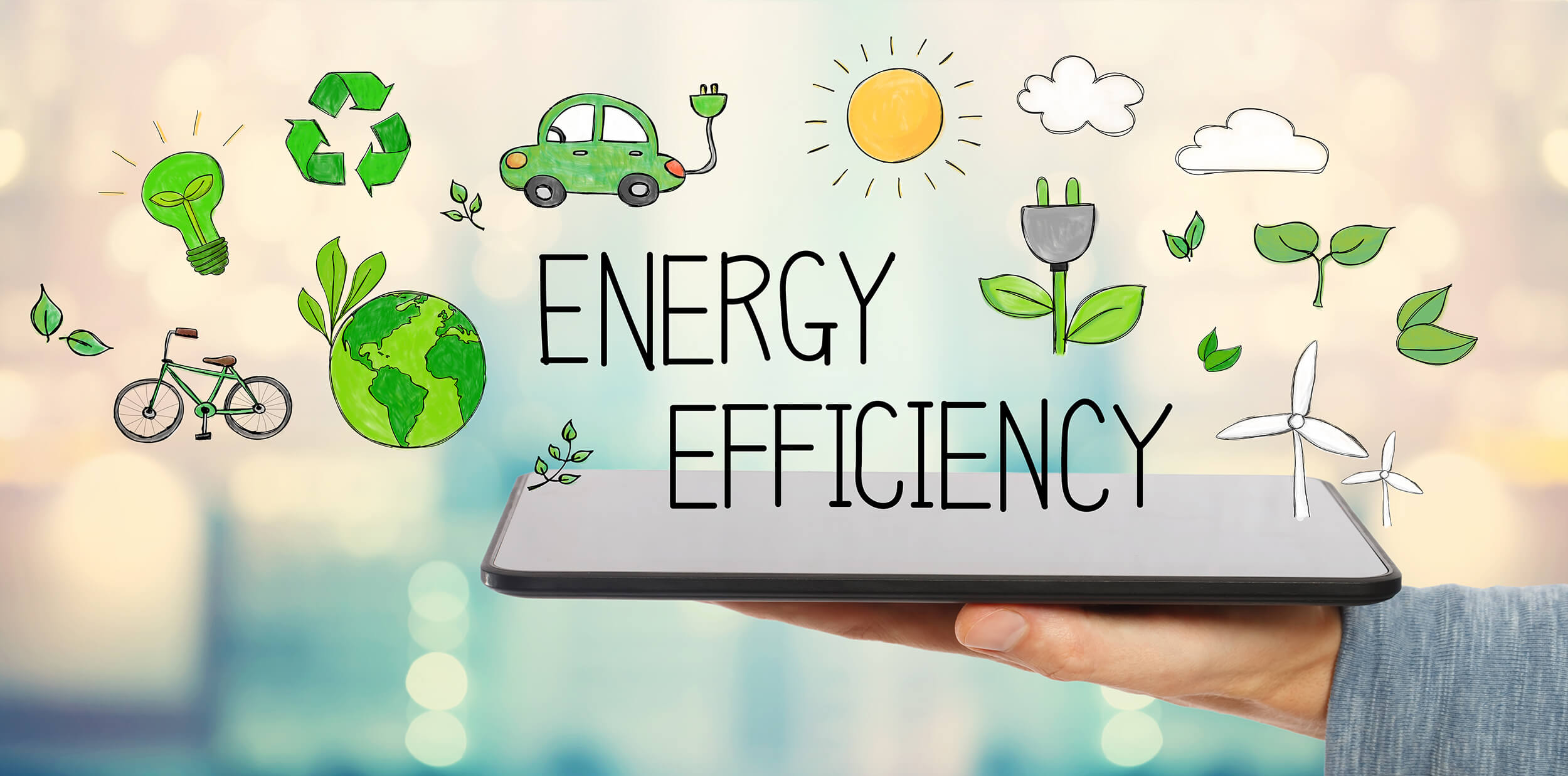Over the next few months, Next Step will explore the intersection of housing and the climate crisis in a new blog series.
What is ENERGY STAR Anyway?
Most people are aware of the little blue sticker found on many of today’s consumer products. From washers to laptops, a lot of products can carry the ENERGY STAR® certification. But what does that mean? And – more importantly – why should we care?
ENERGY STAR is a program backed by the U.S. Environmental Protection Agency (EPA) and the U.S. Department of Energy (DOE) that promotes energy efficiency.
“ENERGY STAR and its partners helped American families and businesses save 5 trillion kilowatt-hours of electricity, avoid more than $450 billion in energy costs, and achieve 4 billion metric tons of greenhouse gas reductions.”
That little blue sticker serves as a quick point reference, making it easy for both consumers and businesses to purchase products that help them save money and protect the environment. In 2019 alone, certified products saved consumers 230 billion kilowatt-hours of electricity, $23 billion in energy costs, and reduced greenhouse gasses by 170 million metric tons.
Why Does ENERGY STAR Matter to Next Step?
While you may be familiar with the blue ENERGY STAR® sticker on appliances or windows, you may not know that you can build an entire home to be compliant. While all types of buildings, like hospitals, hotels, and factories, can use program best practices to identify cost-effective approaches to managing energy use to save energy and increase profits, only manufactured homes can be wholly certified.
And this is the standard that Next Step starts with for energy-efficiency in our homes.
Manufactured homes that are ENERGY STAR-certified can save homeowners up to 30 percent on their monthly utility bills. Increased energy-efficiency helps increase value – and upgrading to a more energy-efficient home package can be a powerful investment for homebuyers. Also, some utility companies and power cooperatives offer rebates for home buyers that upgrade to an ENERGY STAR-rated.
What are the Criteria for ENERGY STAR Manufactured Homes?
While an ENERGY STAR home may cost a bit more up front, the savings over time are well worth the investment. Any new manufactured home built after June 1, 2020, must meet rigorous criteria for certification:
- Electric Heat Pump Package
- High-Efficiency Furnace Package
- Wall Insulation of at Least R-11
- Floor Insulation of at Least R-22
- Ceiling Insulation of at Least R-33
- Glazing U-factor of .35
- Programmable Thermostat
- Energy-Star Appliances, Water Heater, Lighting, Windows, and Doors
- Floor and Upper Ducts Enclosed by Insulation
- Marriage Line Seal with Permanent Air Barriers in Ceiling/Walls/Floor
Impact on Climate Change
According to the EPA website, energy-efficiency avoids high energy bills and unnecessary pollution. Many products, homes, commercial buildings, and industrial facilities consume far more energy than needed. For example, energy-efficient light bulbs certified by use 70 to 90 percent less energy than incandescent bulbs.
In May, the EPA announced advancements to the program that will fight climate change:
“As the agency works toward realizing President Biden’s goal of reducing emissions by over 50 percent by 2030, today’s announcements showcase the ability of EPA’s climate partnerships to foster a clean energy future by reducing fossil fuel use, increasing energy efficiency, and creating local jobs.”
The plan is to adjust program requirements to make it even more stringent. Here are the planned changes to the program, according to the May press release:
- Develop a new ENERGY STAR program offering to accelerate energy efficiency and electrification retrofits in existing homes.
- Advance the ENERGY STAR Recognition Program for Residential New Construction.
- Advance public health protections through residential labeling programs for indoor air quality.
- Support development of building benchmarking policies and building performance standards.
- Launch EPA Zero-Carbon Building Recognition.
- Launch a New Greenhouse Gas Emissions Calculator Tool for Commercial Buildings.
- Provide technical assistance to state, local and tribal governments.
Read next month’s entry in our blog series to learn how Next Step families benefit from ENERGY STAR homes.


